42 reading nutrition labels for diabetics
PDF What Can I eat? - American Diabetes Association list of everything that is in the food. They are listed by the highest amount to the least. If the first word in the list is sugar, then there is more sugar in the food than anything else. Reading Food Labels Food labels can help you choose what foods to eat. Use the labels at right to find the best choice. 1-800-DIABETES (1-800-342-2383) PDF Label Reading Basics for Diabetes - Veterans Affairs Label Reading Basics for Diabetes size used for all the values on the label. serving sizes. NUTRITION FACTS Serving Size ½ cup (114g) Servings Per Container: 4 Amount Per Serving Calories 90 Calories From Fat 30 % Daily Value* Total Fat 3g 5% Saturated Fat 0g 0% Trans Fat 0g **
Reading food labels: Tips if you have diabetes - Drugs.com Start with the list of ingredients. Consider carbs in context. Put sugar-free products in their place. Beware of fat-free products. Know what counts as a free food. Do the math. The bottom line. When you live with diabetes, your diet is a vital part of your treatment plan.

Reading nutrition labels for diabetics
How to read food labels if I have diabetes or prediabetes? For people with diabetes or prediabetes, total carbohydrates, dietary fibre and calories are key nutrients to look out for. Choose products with higher fibre, lower sugar and sodium contents (more on this later). Avoid salted snacks and processed foods. Portion size of food and drinks is another important factor when managing blood sugars. Reading Food Labels | ADA - American Diabetes Association The Nutrition Facts labels on foods are really the key to making the best choices. We'll cover the basics so that these labels make shopping easier for you. You've heard it all. From carb-free to low-carb, to whole and empty carbs, it's hard to know what it all means. Blood sugar highs and lows aren't always easy to understand. Reading Food Labels, The Most Basic Tool in Diabetes Management What are the 6 steps to reading food labels? Step 1: Examine serving sizes and calorie counts per serving. The serving size determines all of the information on a food label. Keep in mind that one serving may be significantly smaller than you believe. For example, if you eat two portions, you've consumed twice as many calories, fat, and salt.
Reading nutrition labels for diabetics. How to Read Food Labels When You Are Diabetic - Diabetics Weekly Study the Carbohydrate Content in Detail This is the most important aspect of how to read food labels when you have diabetes. The total amount of carbohydrates breaks down into complex carbohydrates, sugar, and fiber. Don't hone in on zero-sugar foods, as foods like milk and fruit contain natural sugars. Diabetes Food Label Reading: Quick Tips to Shop Smarter Read the actual food label - the ingredients list and the nutrition facts panel. We recommend skimming the back label and keeping your eyes open for sugar and sugar alternatives that might be hiding somewhere in the ingredients list. Food Labels | CDC - Centers for Disease Control and Prevention If you eat the whole thing, you are eating 8 times the amount of calories, carbs, fat, etc., shown on the label. Total Carbohydrate shows you types of carbs in the food, including sugar and fiber. Choose foods with more fiber, vitamins, and minerals. Choose foods with lower calories, saturated fat, sodium, and added sugars. Avoid trans fat. 4 Things Diabetics Should Always Look for on Food Labels 1. Carbs Carbs can wreak havoc on the blood sugar. However, food labels often list "total carbohydrates." And that makes it difficult to determine exactly which carbs are included. So, when in doubt choose complex carbs instead of refined. Whole grains have less sugar and more nutrients. And this, in turn, helps prevent sugar spikes. 2. Sugar
PDF Label reading basics for diabetes - Veterans Affairs Label Reading Basics for Diabetes Nutrition and Food Services (05/2020) Serving Size • The serving size is the portion size used for all the values on the label. • Different foods have different serving sizes. • The serving size on this label is 2/3 cup. Servings per Container • Indicates the number of Decoding Diabetes: How to Read Nutrition Labels | Accu-Chek Decoding Diabetes: How to Read Nutrition Labels Nutrition Label Basics. Any nutrition label will contain some basic pieces of information that can help you think... Serving Sizes. As you may have experienced, nutrition labels do not always speak to an entire package. You may buy a 16... Calories ... How to Read Nutrition Labels When You Have Diabetes - WebMD How to Read a Nutrition Label for Diabetes . latest videos on Diabetes. Success With Type 2 Diabetes; Treatments for Diabetic Macular Edema; How Type 2 Diabetes Medication Works; Reading food labels & nutrition panel - Diabetes Queensland Reading food labels When choosing packaged food, choose products with: lower energy (kilojoules) if you are trying to lose weight lower total and saturated fat lower sugar lower sodium higher fibre Every food label tells a story and the Nutrition Information Panel simply gives you the facts.
Learning To Read Labels :: Diabetes Education Online On a nutrition food label, subtract the fiber from the total carbohydrate amount. When you read food labels, the grams of sugar are already included in the total carbohydrate amount, so you do not need to count this sugar amount separately. The grams of sugar listed include both natural sugars, from fruit or milk, and added sugars. Reading food labels: Tips if you have diabetes - Mayo Clinic Reading food labels: Tips if you have diabetes Start with the list of ingredients. When you're looking at food labels, start with the list of ingredients. Keep an eye... Consider carbs in context. If your meal plan is based on carbohydrate counting, food labels become an essential tool. Put ... Reading labels | Diabetes UK Always look at the 'total carbohydrate' on the label when carb counting. This will make sure you are counting both the complex (starchy) and simple (sugary) carbs in your food. Both will raise your blood glucose (blood sugar) levels, and need to be matched with insulin. In general, sugar-free options like diet drinks and jellies don't need to be counted. What to Look for on a Nutrition Label if You Have Diabetes Calories - for weight control. Sugars - for blood sugar control. Saturated fat - for weight control, blood sugar control, and heart health. Sodium - for blood pressure control and often as an indicator of processed foods. You also generally want foods that are higher in: Protein - for hunger control and blood sugar control.
Reading Food Labels, The Most Basic Tool in Diabetes Management What are the 6 steps to reading food labels? Step 1: Examine serving sizes and calorie counts per serving. The serving size determines all of the information on a food label. Keep in mind that one serving may be significantly smaller than you believe. For example, if you eat two portions, you've consumed twice as many calories, fat, and salt.
Reading Food Labels | ADA - American Diabetes Association The Nutrition Facts labels on foods are really the key to making the best choices. We'll cover the basics so that these labels make shopping easier for you. You've heard it all. From carb-free to low-carb, to whole and empty carbs, it's hard to know what it all means. Blood sugar highs and lows aren't always easy to understand.
How to read food labels if I have diabetes or prediabetes? For people with diabetes or prediabetes, total carbohydrates, dietary fibre and calories are key nutrients to look out for. Choose products with higher fibre, lower sugar and sodium contents (more on this later). Avoid salted snacks and processed foods. Portion size of food and drinks is another important factor when managing blood sugars.

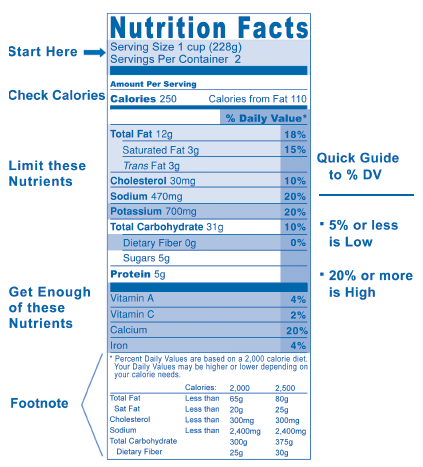

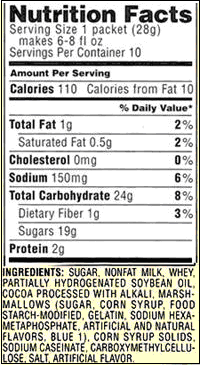


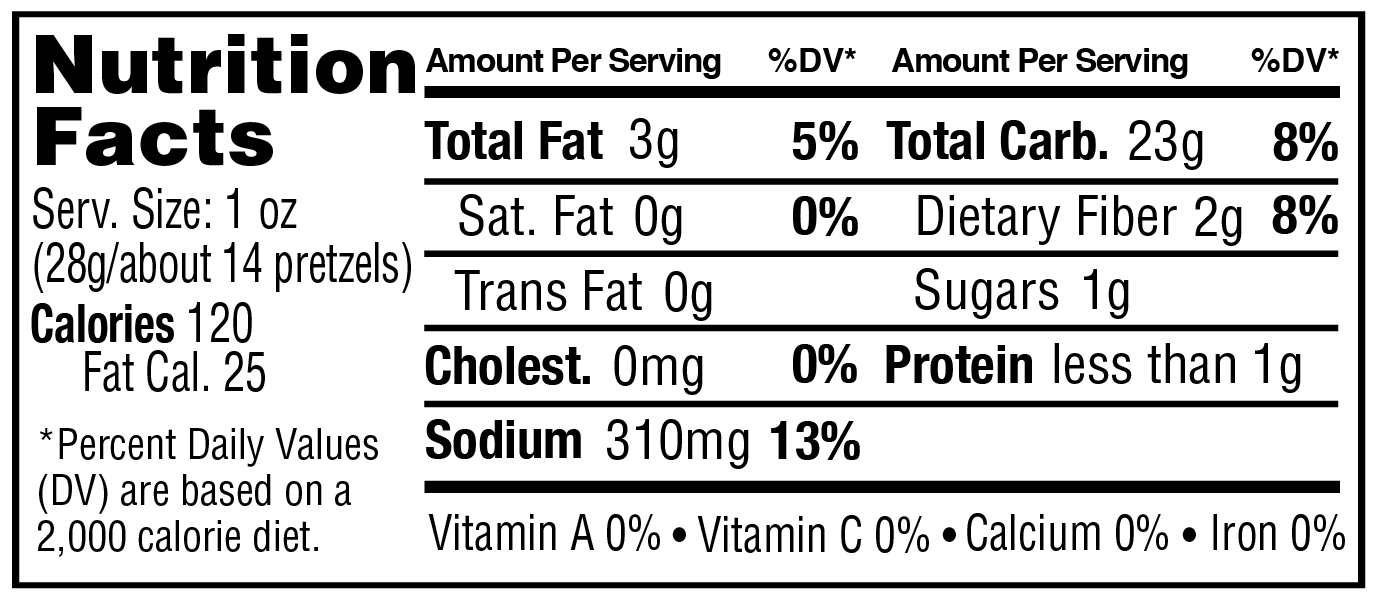
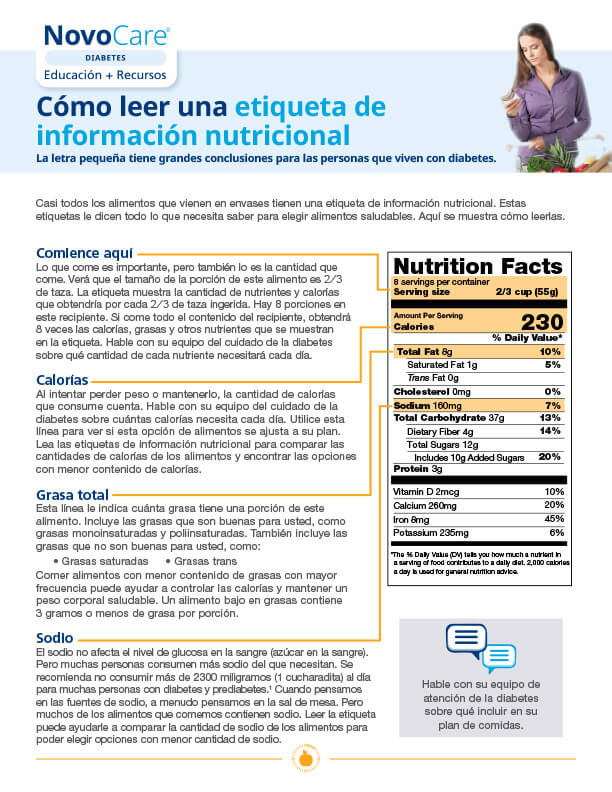
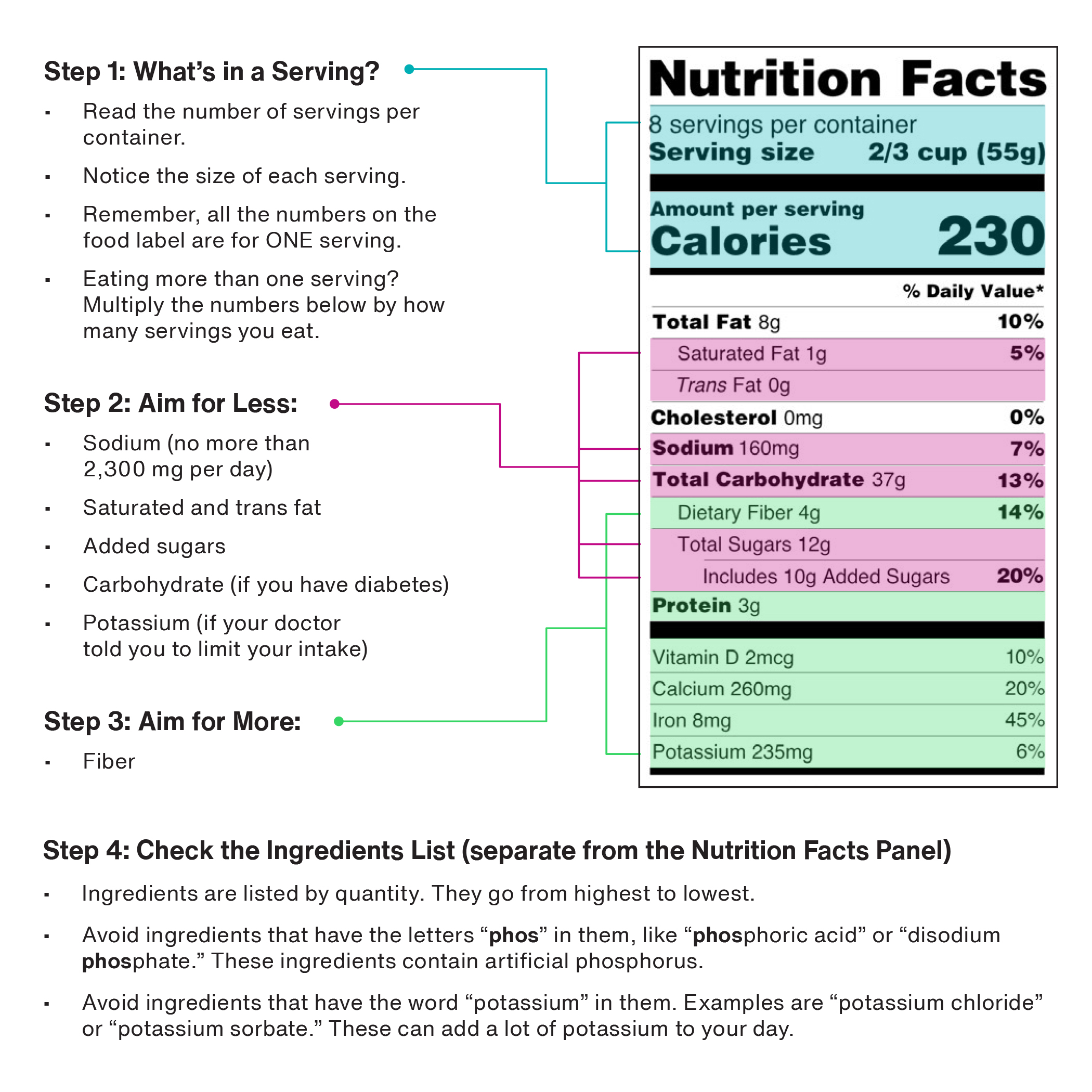
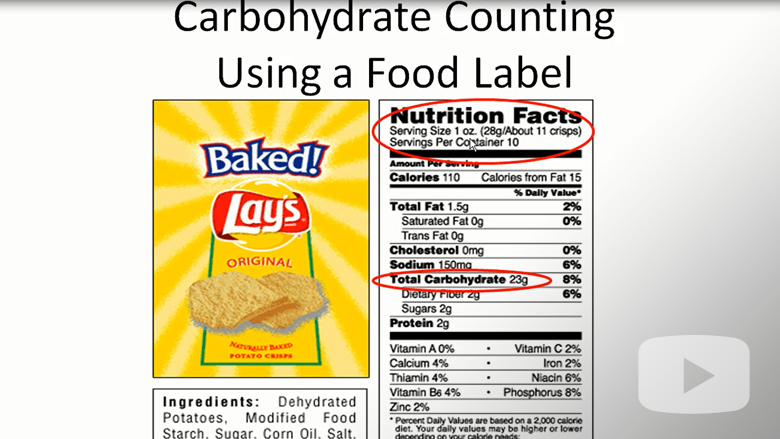

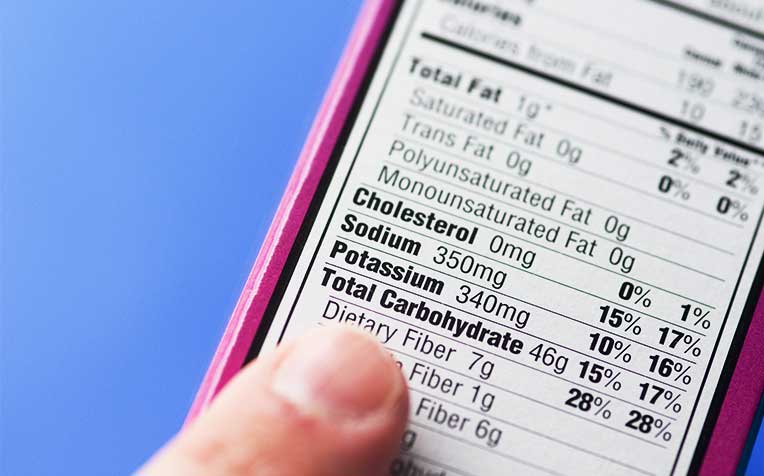

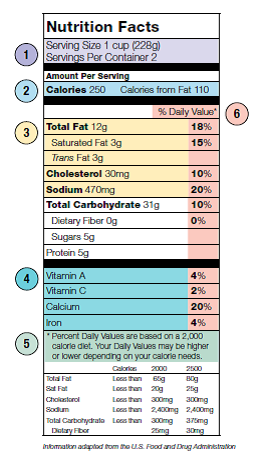
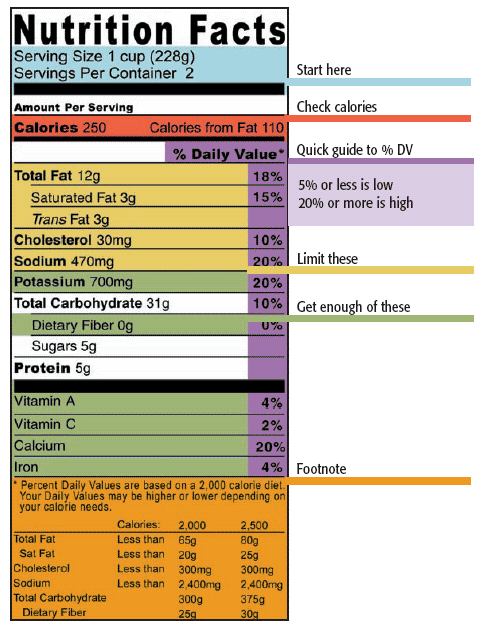


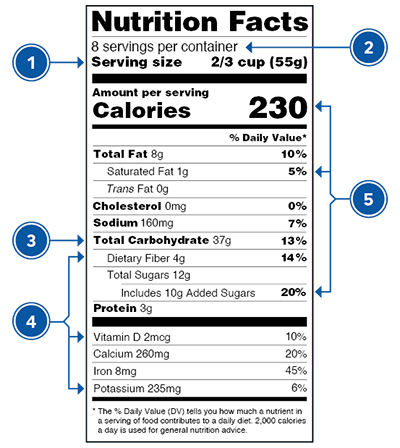
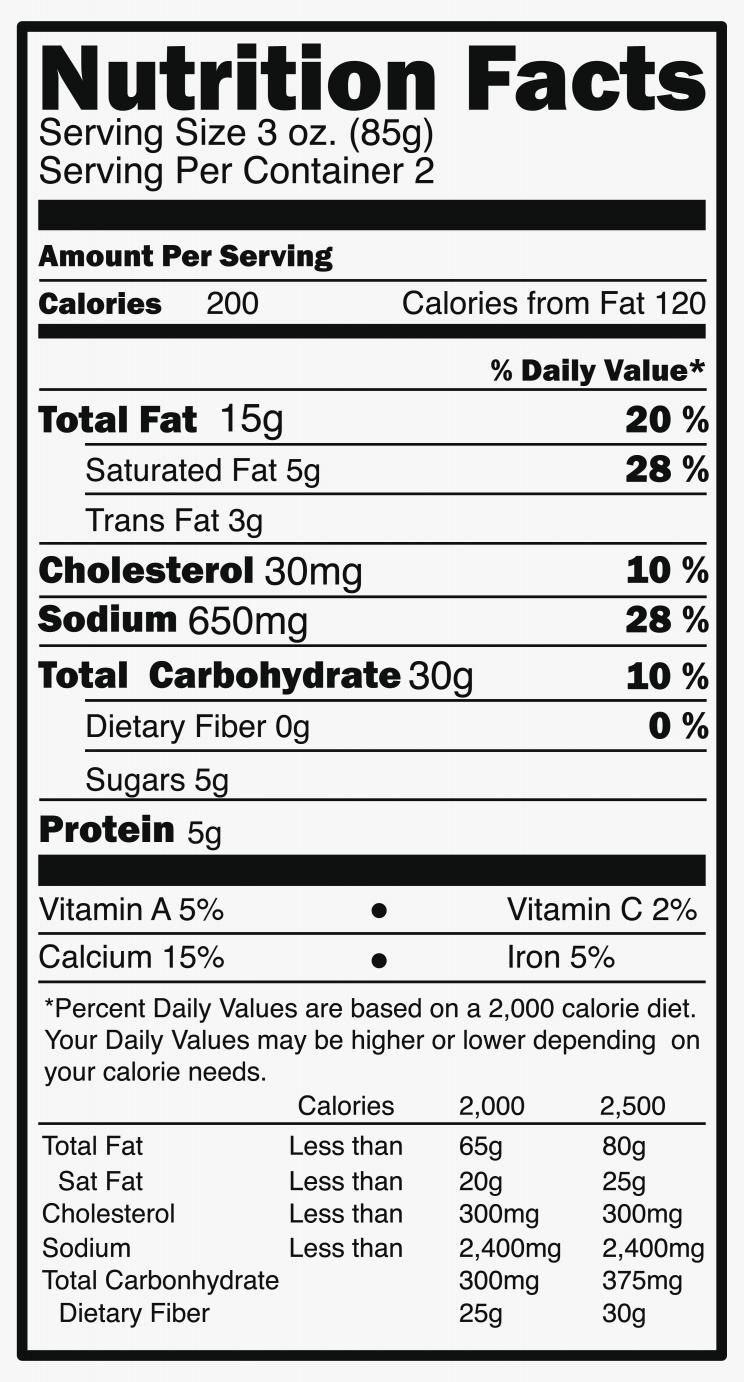
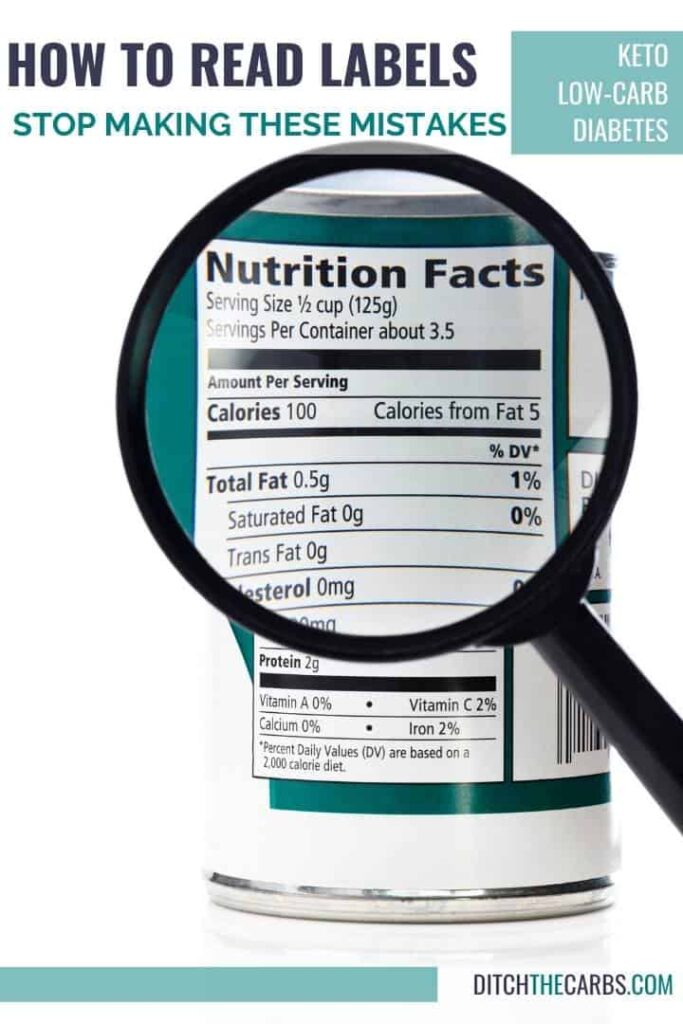

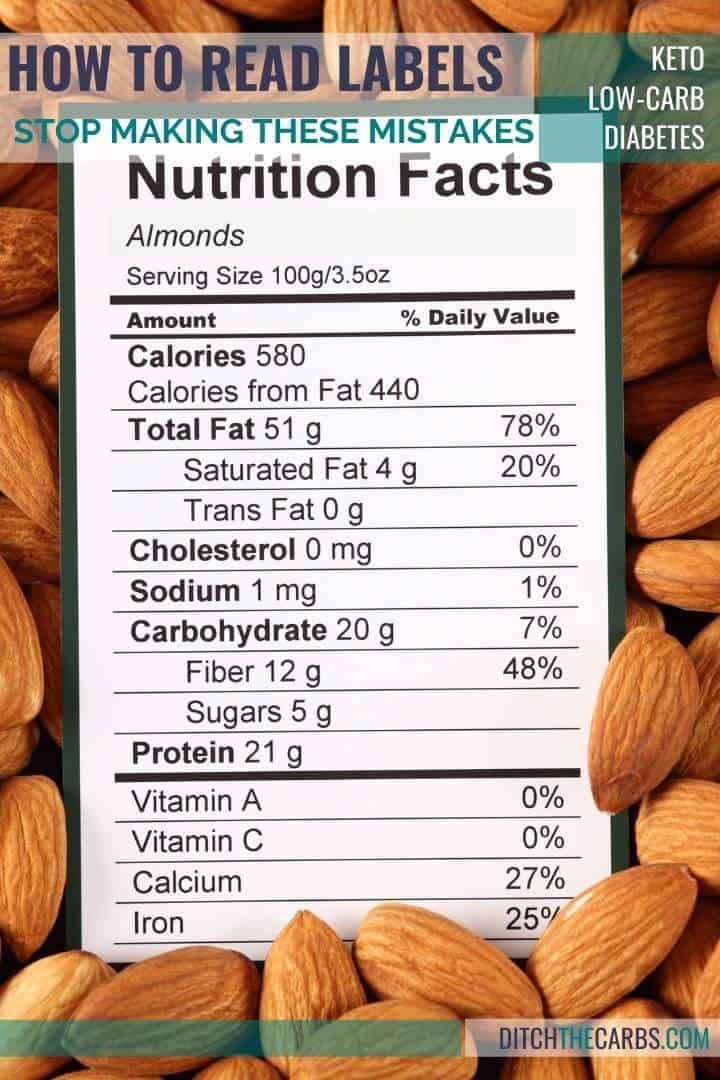
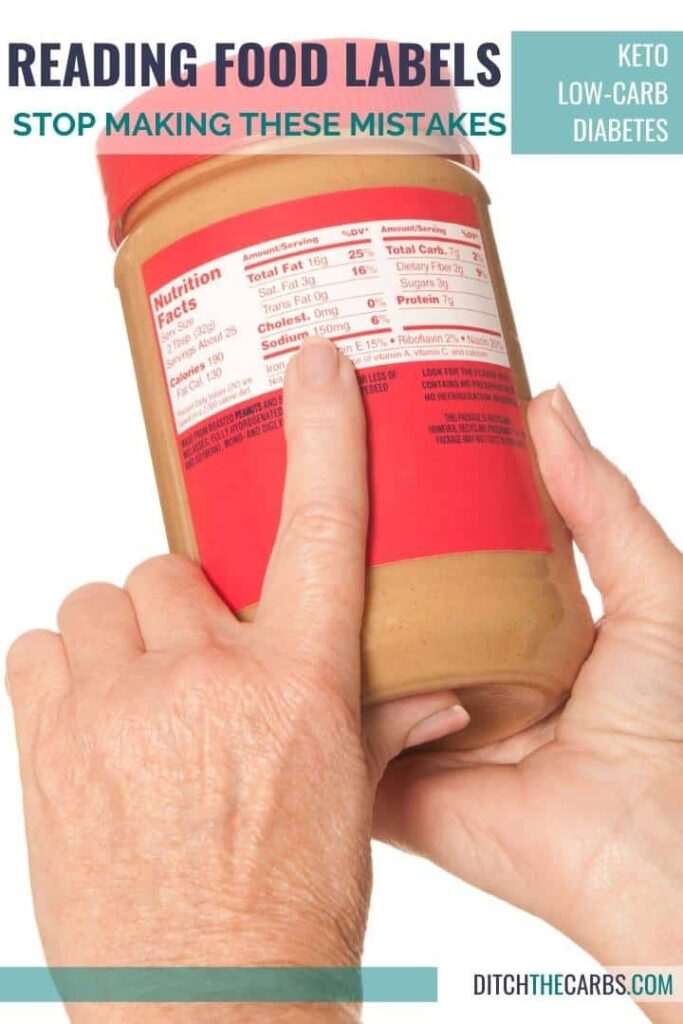
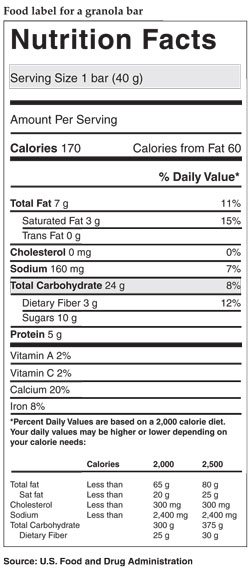


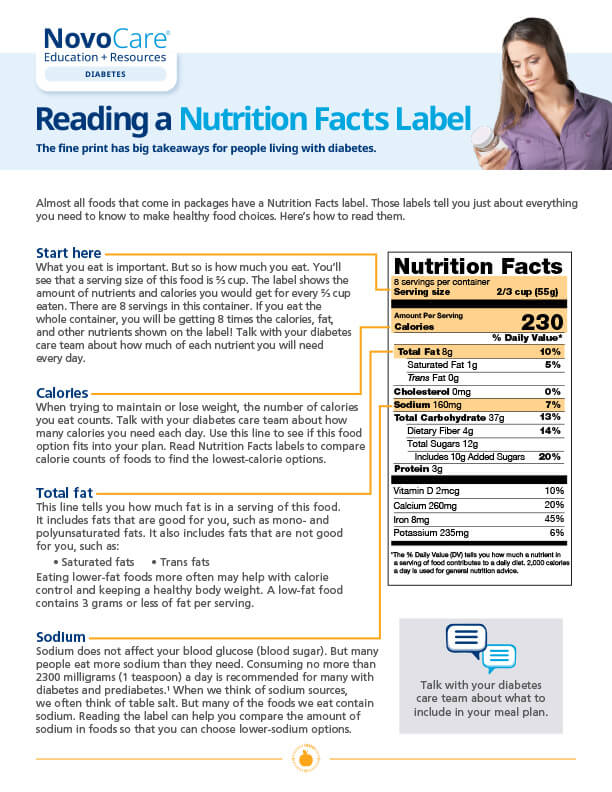
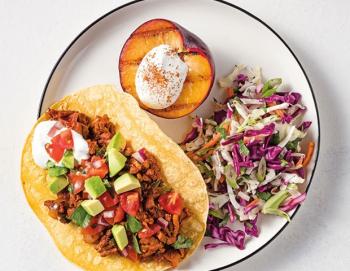
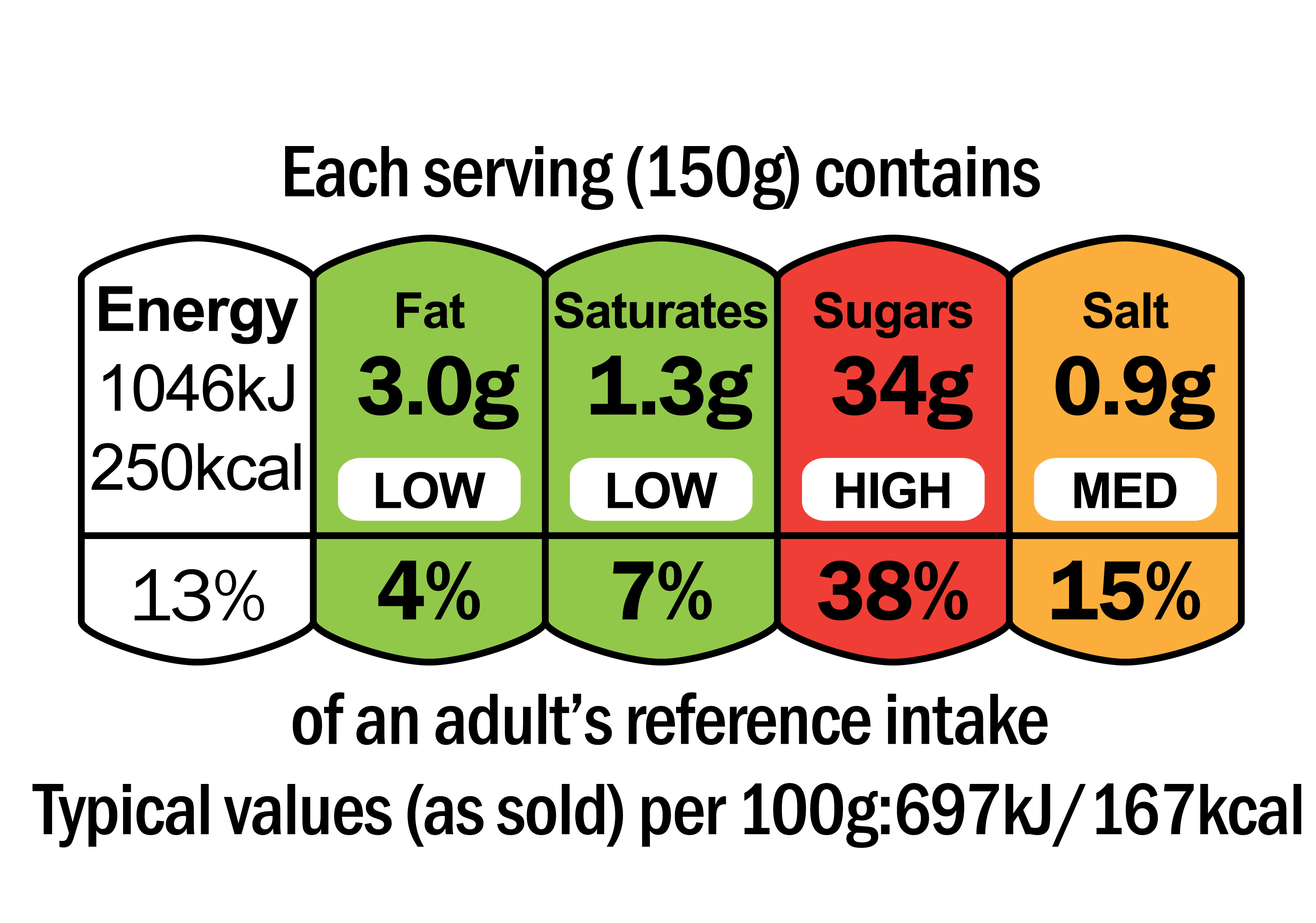



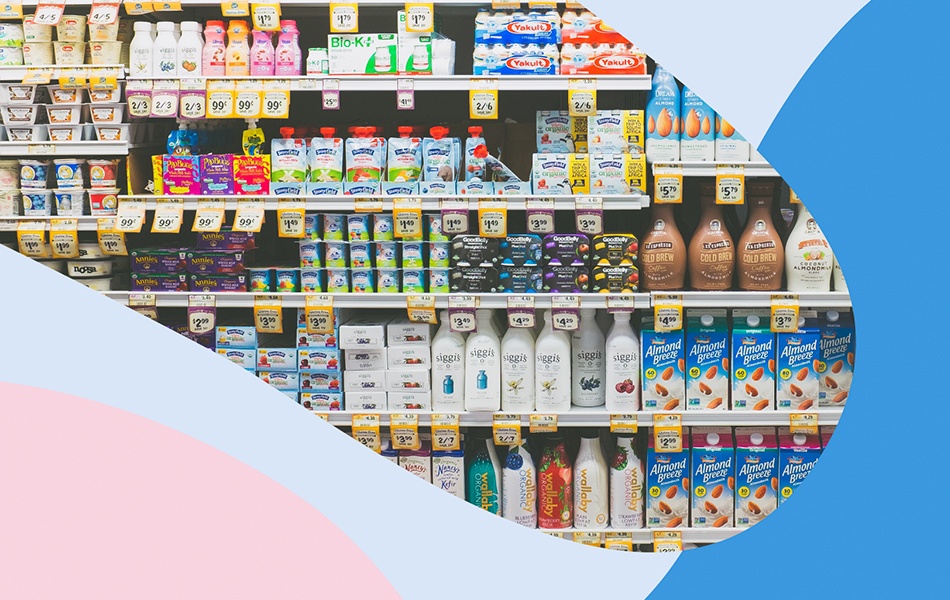




Post a Comment for "42 reading nutrition labels for diabetics"